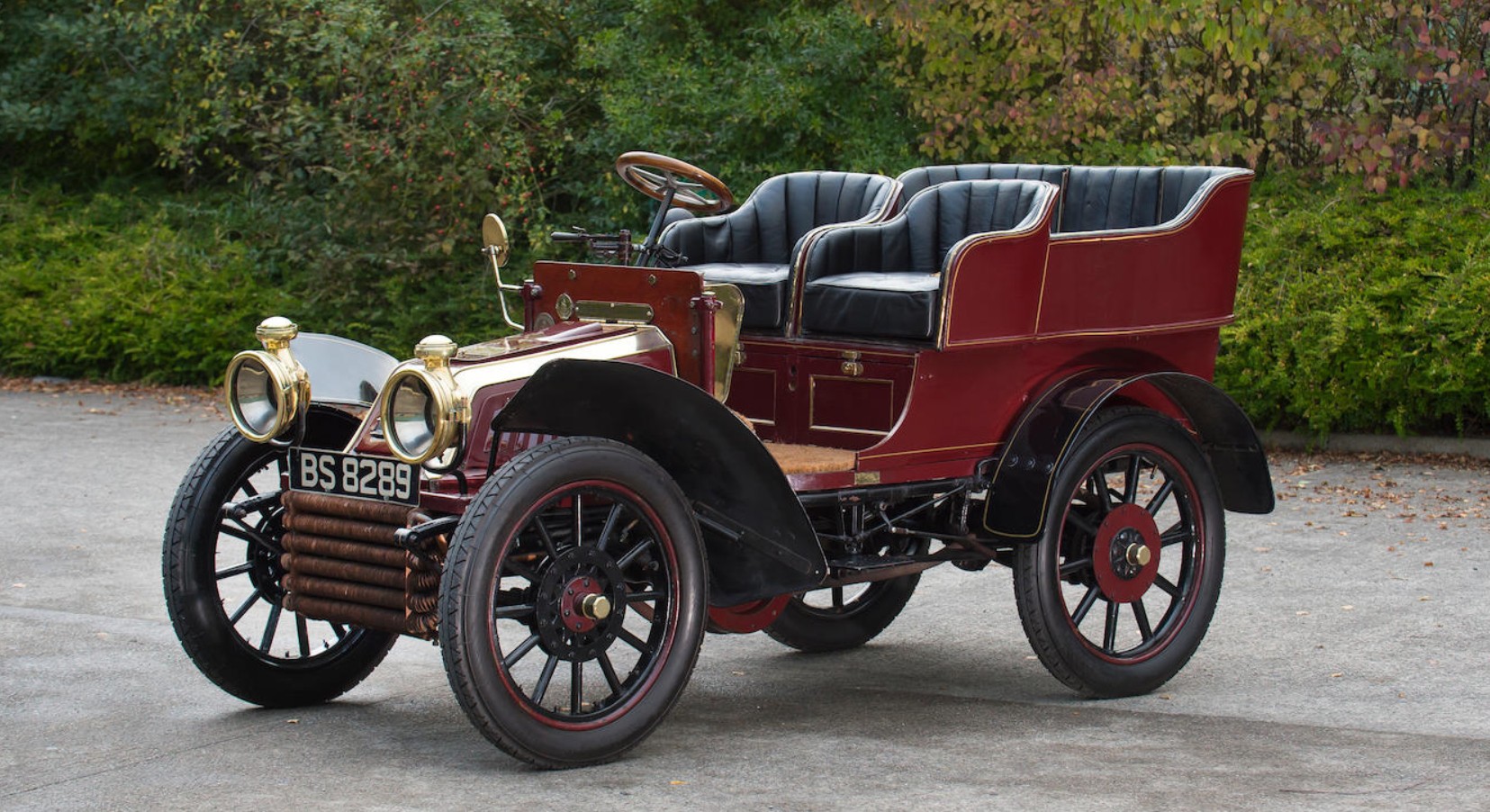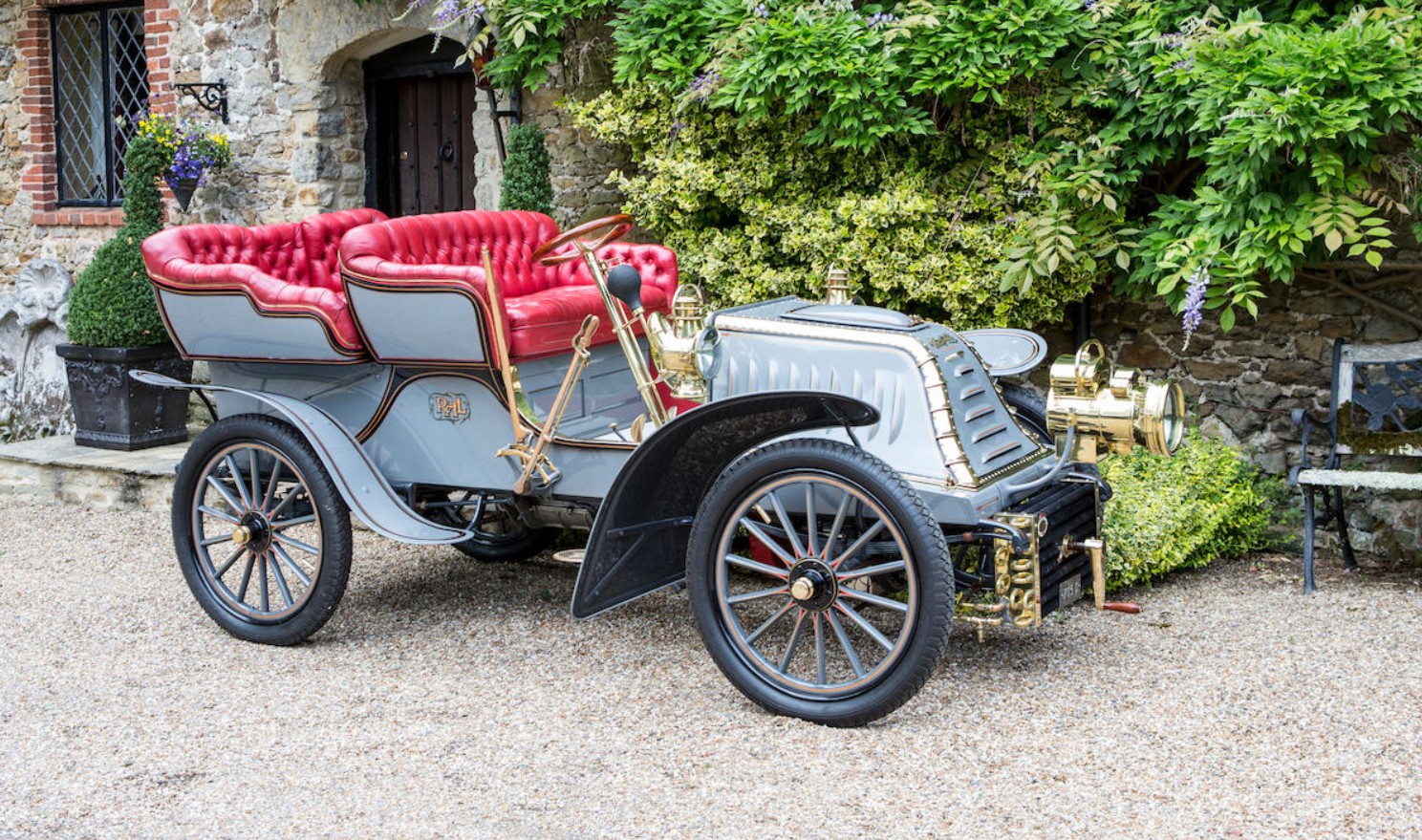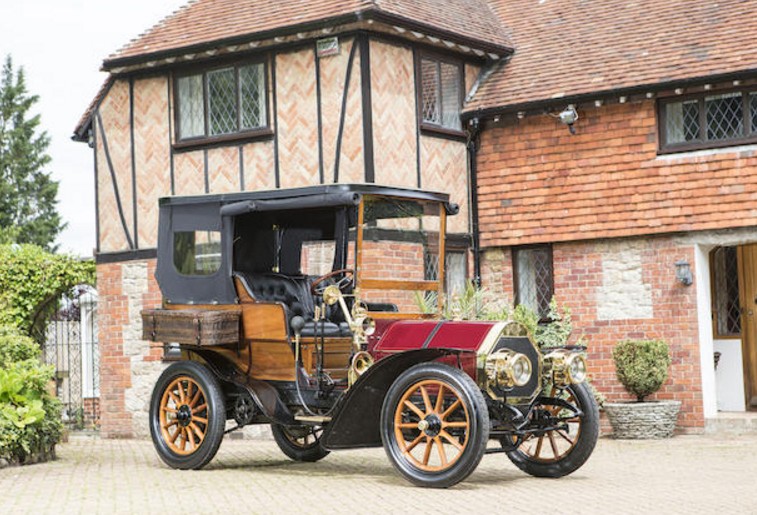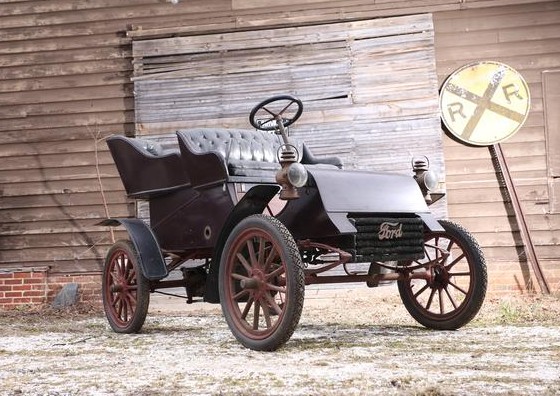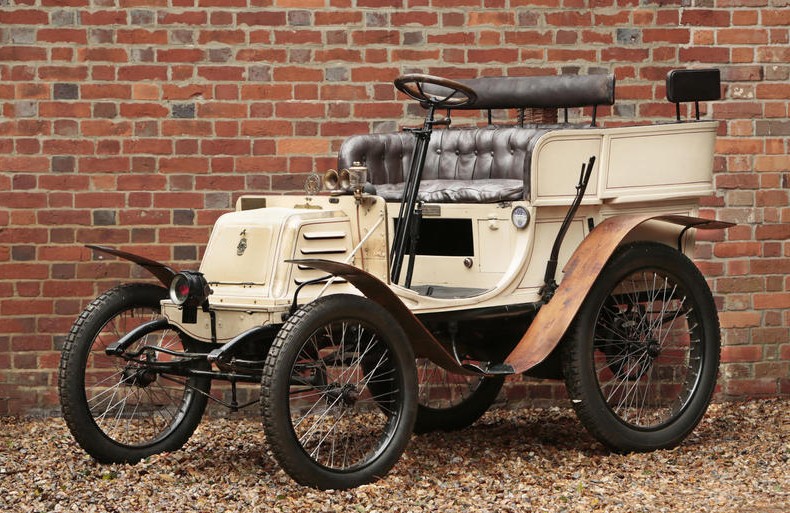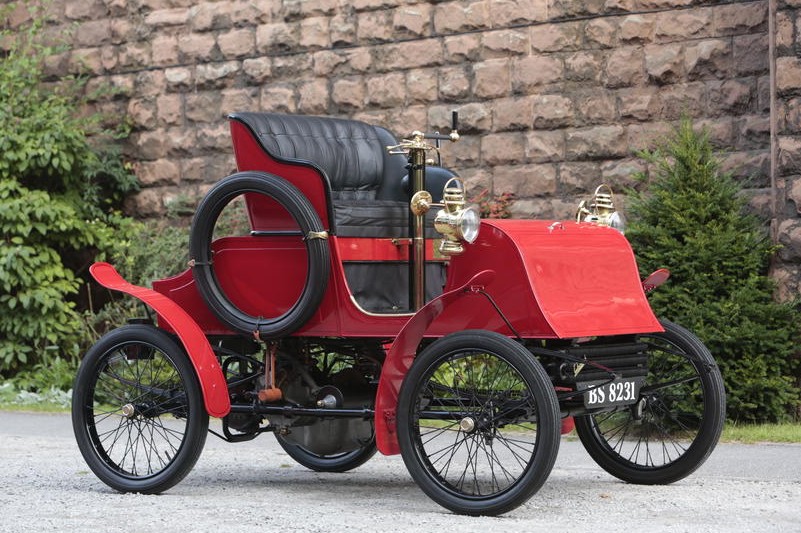1901 Schaudel 10HP Twin-Cylinder Four-Seat Rear-Entrance Tonneau
Offered by Bonhams | London, U.K. | November 3, 2017
Charles Schaudel’s little French car company lasted a very brief time. He built his first car in 1900 and by 1902 he had sold out to his brother-in-law, who changed the name of the company to Motobloc (which lasted until 1931).
The engine is a 10 horsepower two-cylinder unit that is mounted transversely (and, with its gearbox configuration, it is noted in the catalog that this car sports the same drivetrain layout as the original Mini). The engine was rebuilt in 2016 after taking part in 12 London-to-Brighton runs, which means it is fresh and ready to go this year.
Only two Schaudel-branded automobiles are known to exist and this one has appeared on British television on multiple occasions. This is a pretty awesome find from a really obscure company. There’s really no reason something made in such limited numbers should still exist, but we’re sure glad it does. This one should bring between $170,000-$210,000 at auction. Click here for more info and here for more from this sale.
Update: Sold $192,834.
Update: Sold, Bonhams London-to-Brighton 2018, $156,891.

